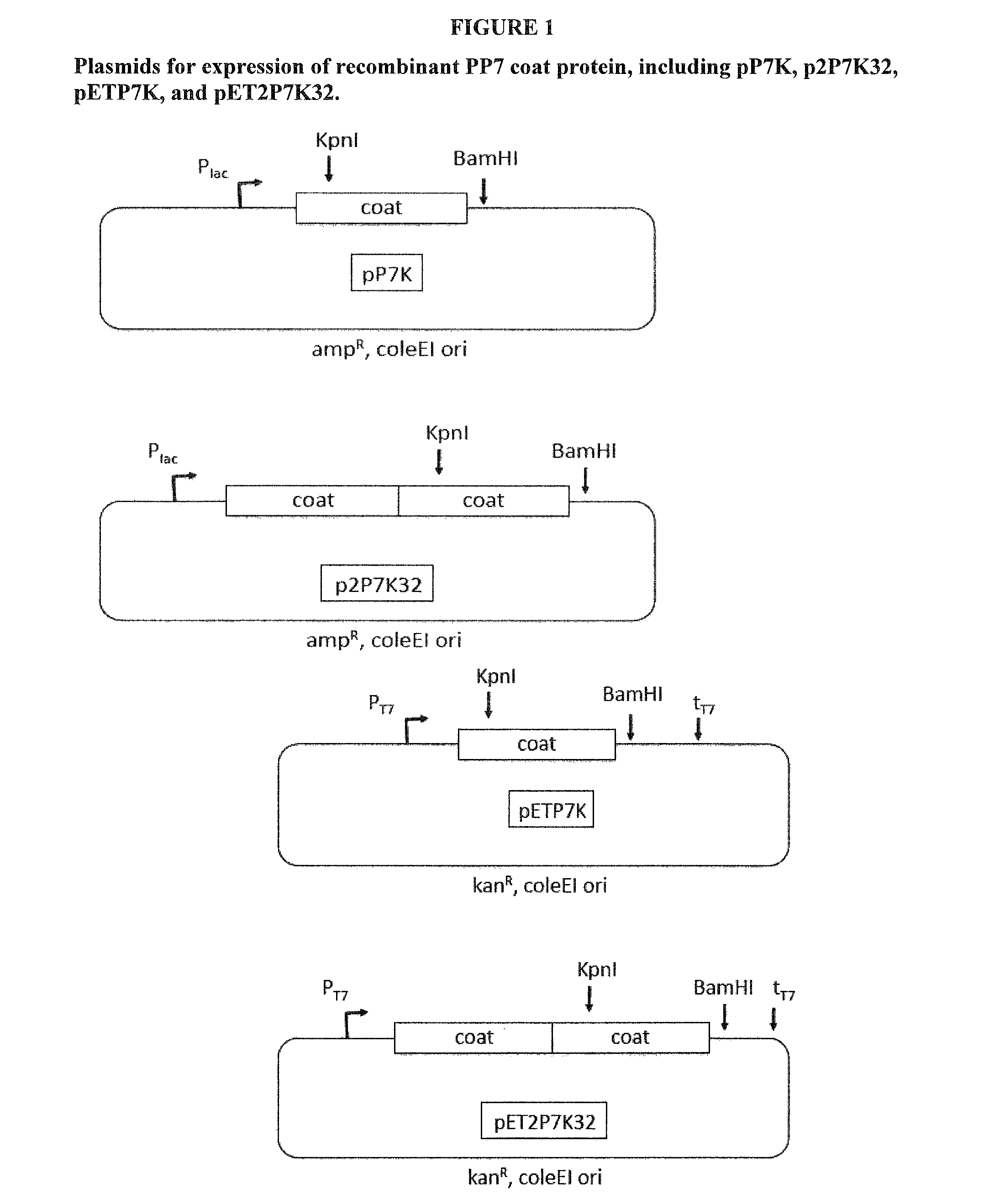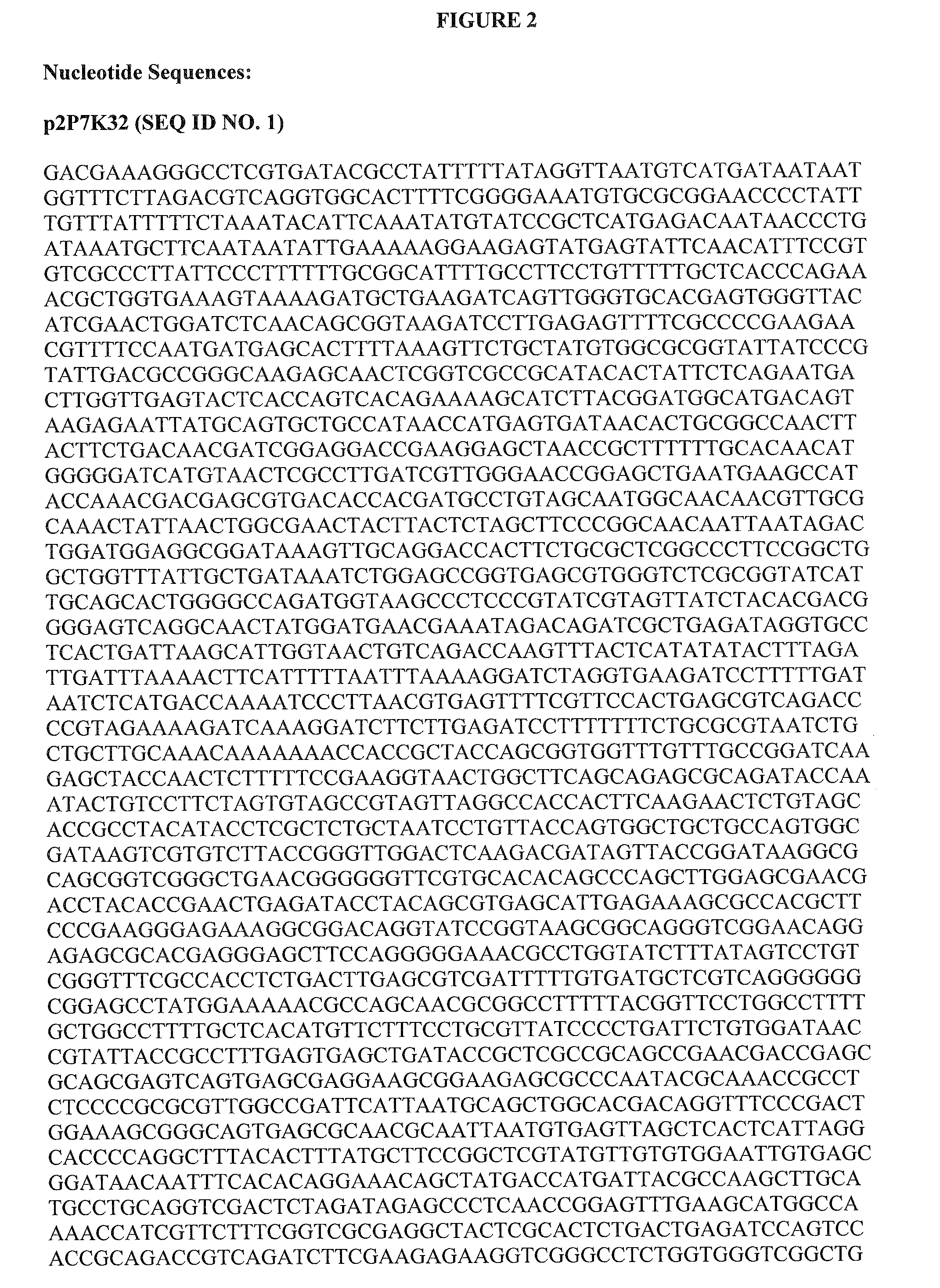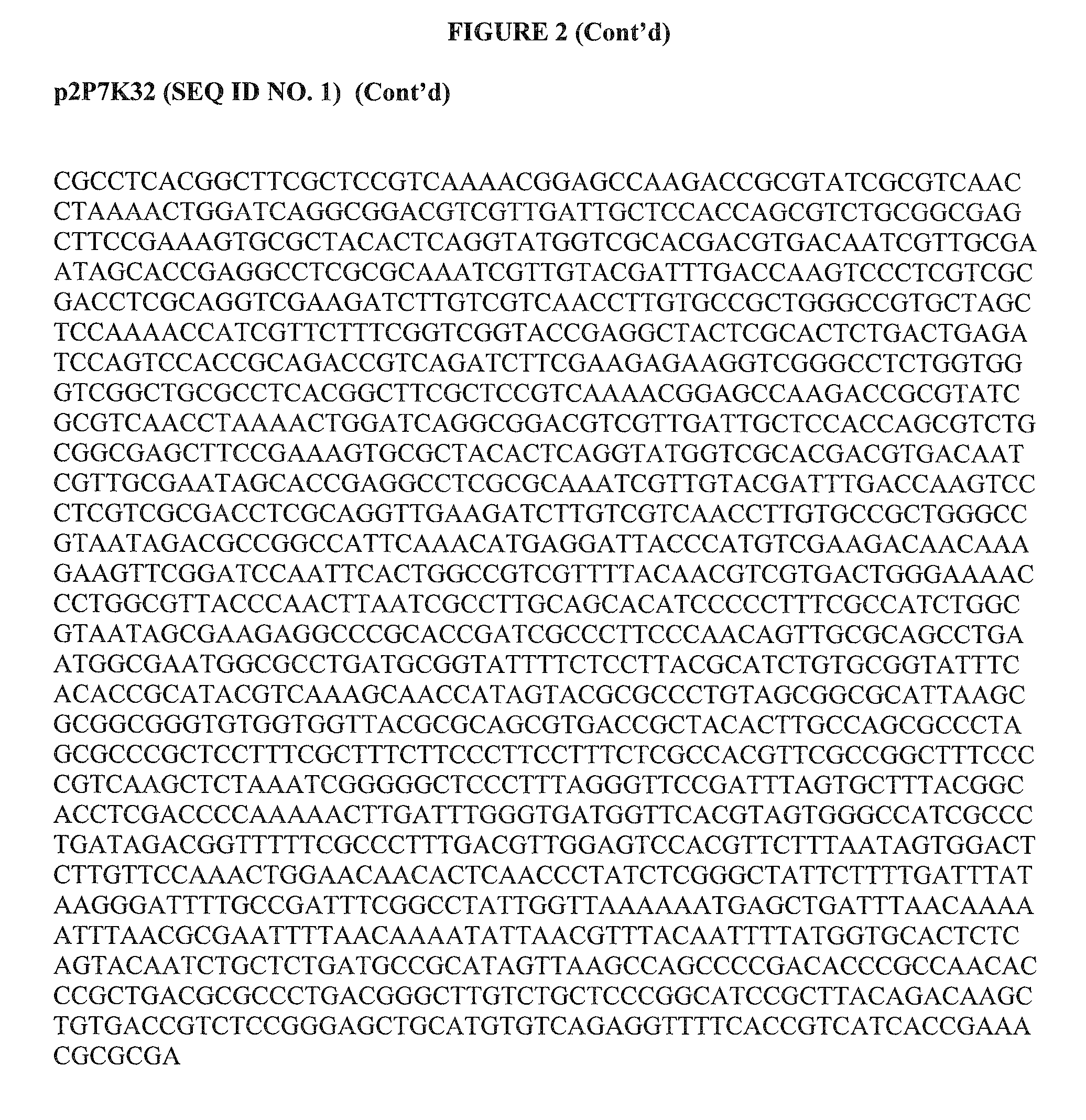Immunogenic HPV L2-containing VLPs and related compositions, constructs, and therapeutic methods
a technology of immunogenic hpv and l2 is applied in the field of immunogenic hpv l2containing virallike particles, which can solve the problems of poor immunogenicity of l2 and the inability to use l1-vlps to provide complete protection against cancer multiple high-risk genotypes, and achieve high immunogenicity
- Summary
- Abstract
- Description
- Claims
- Application Information
AI Technical Summary
Benefits of technology
Problems solved by technology
Method used
Image
Examples
example 1
Design of L2-Displaying PP7 VLPs
[0147]The construction of the expression plasmids p2P7K32 and pET2P7K32 have been described above. As explained, these plasmids code for the expression of a version of PP7 coat protein in which two copies of coat protein are genetically fused into a “single-chain” dimer. p2P7K32 and pET2P7K32 also contain a unique KpnI sites that allow for genetic insertion of sequences at amino acid 11 of the downstream copy of coat. To create the VLPs that display L2 peptides we designed PCR primers (shown in FIG. 2) that allowed us to clone L2-derived sequences into the AB-loop of PP7 coat. These sequences represented L2 amino acids 17-31 from different HPV isolates, including HPV16 (QLYKTCKQAGTCPPD) SEQ ID No. 15, HPV45 (DLYRTCKQSGTCPPD) SEQ ID No. 25, and HPV58 (QLYQTCKASGTCPPD) SEQ ID No. 19. This strategy was used to insert the corresponding L2 amino acids from other HPV types (shown in FIG. 2) into the PP7 single-chain dimer. The sequence of this region of L2 ...
example 2
L2 Peptides Displayed on PP7 VLPs are Displayed to the Immune System and are Immunogenic
Overview.
[0150]In order to demonstrate that L2 peptides inserted into the PP7 AB-loop were indeed displayed on the surface of VLPs, we assessed the ability of a monoclonal antibody (mAb) RG-1; (20)) specific for the HPV16 L2 sequence to bind to recombinant 16L2-PP7 VLPs by ELISA. As shown in FIG. 6a, mAb RG-1 bound to 16L2-VLPs, but not to wild-type PP7 VLPs or PP7 VLPs that were modified to display the FLAG epitope (FLAG-VLPs). Moreover, as shown in FIG. 6b, mAb RG-1 bound to all eight of the L2-VLPs we produced, but not to wild-type PP7 VLPs.
[0151]To test the immunogenicity of the VLPs, groups of three to nine mice were immunized with L2 displaying-VLPs or wild-type PP7 VLPs by intramuscular injection. Groups of three to nine mice were immunized intramuscularly with 10 μg of VLPs plus incomplete Freunds Adjuvant (IFA). All mice were boosted with the same amount of VLPs two weeks later. Sera wer...
example 3
PP7 VLPs Displaying a HPV16 L2 Peptide can Induce Neutralizing Antibodies that Protect Mice from Homologous and Heterologous Genital HPV Pseudovirus Challenge
Overview.
[0152]The 16L2-VLP vaccine we designed contains amino acids 17-31 from HPV16 L2, a region shown to contain one or more highly cross-reactive neutralizing epitopes (1, 20), suggesting that the 16L2 VLPs could potentially protect against HPV challenge. We demonstrated that 16L2-VLPs could protect mice from HPV challenge using a HPV pseudovirus / mouse genital challenge model, first reported by Roberts and colleagues (40).
Additional Description.
[0153]The 16L2-VLP vaccine we designed contains amino acids 17-31 from HPV16 L2, a region shown to contain one or more highly cross-reactive neutralizing epitopes (1, 20), suggesting that the 16L2 VLPs could potentially protect against HPV challenge. We assessed whether 16L2-VLPs could protect mice from HPV challenge using a HPV pseudovirus / mouse genital challenge model, first report...
PUM
| Property | Measurement | Unit |
|---|---|---|
| dissociation constant | aaaaa | aaaaa |
| immunogenic composition | aaaaa | aaaaa |
| conformational | aaaaa | aaaaa |
Abstract
Description
Claims
Application Information
 Login to View More
Login to View More - R&D
- Intellectual Property
- Life Sciences
- Materials
- Tech Scout
- Unparalleled Data Quality
- Higher Quality Content
- 60% Fewer Hallucinations
Browse by: Latest US Patents, China's latest patents, Technical Efficacy Thesaurus, Application Domain, Technology Topic, Popular Technical Reports.
© 2025 PatSnap. All rights reserved.Legal|Privacy policy|Modern Slavery Act Transparency Statement|Sitemap|About US| Contact US: help@patsnap.com



